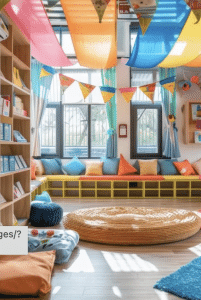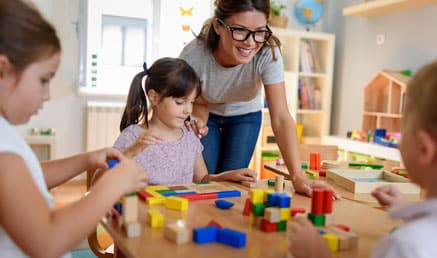
“It’s our polite nudge in the ribs to help you and your team stay organised and on task.”
This week’s subject is: Fit for purpose.
Element 3.1.1: Outdoor and indoor spaces, buildings, fixtures and fittings are suitable for their purpose, including supporting the access of every child.
Are you and your team consistently re-evaluating the physical environment to ensure it supports children’s learning and development, is welcoming and enriching, promotes inquiry, independence, engagement with the natural environment and is responsive to children’s interests?
Services must provide a physical environment that is safe, inclusive and incorporates space for children to work and play together individually and in small and large groups.
Educators draw on their pedagogical practice to design carefully considered, age appropriate indoor and outdoor learning environments that engage and challenge children whilst supporting the opportunity for both collaborative and independent play.
Set up the environment to maximise space for children to play, interact with each other and educators. Keep in mind that the way the environment is set up will impact behaviours and interactions of children and adults.
Creating a physical environment that is engaging, inviting, inclusive and welcoming to all children encourages interaction, creativity and a sense of belonging within the service.
When arranging the environment and resources ensure you:
-
- Include children’s input
- Consider how the environment fosters the participation of every child
- Consider visibility and effective supervision
- Critically reflect on (and document) the reasons for the changes
- Consider how the layout of the indoor and outdoor environments support smooth transitions between experiences and the flow between indoor and outdoor spaces
- Consider how grouping of children within the learning environment minimises waiting times and conflict between children and supports the range of children’s development, skills, interests, abilities and ages
- Consider if the environment reflects the diversity within the local and wider communities
- Position quiet areas away from noisier play spaces
- Update your floor plan regularly to spark and maintain interest
- Regularly evaluate indoor and outdoor plans of furniture and resource placement
- Create a welcoming environment that encourages independence and supports a sense of belonging for children and families
- Arrange the environment strategically to avoid overcrowded spaces and extended waiting times
- Provide a range of open-ended equipment and resources that are challenging and cater to a range of developmental levels and ages
- Provide enough resources so that children aren’t having to wait for long periods to use equipment
- Provide opportunities for both solitary and group play and experiences
- Have documented risk assessments that address access to and the impacts/barriers associated with the use of multi-purpose areas and supervision between areas that are widely spaced apart or include “blind spots” in between learning environments (Out of School Hours Services sharing multi-purpose areas with a school).
Resources:
We Hear You- Physical Environment
We Hear You- Supporting Indoor and Outdoor Play
Physical Environment- Case study 1, 2
Sleep and rest legislative requirements
Within System7 go to Quality Area 3/ Modules 1 & 2 to submit self-assessment notes and if required, open a QIP issue if you identify any areas of improvement.
The Childcare Centre Desktop has a range of resources to assist services with physical environment. These include risk assessment and safety check templates, Physical Environment Policy, Outdoor Environment and playground Safety Audit Schedule, Physical Environment and Parent Journey Procedure, Child Safe Standards Checklist and much more.
Resources, NQS Element, Regulation and System7 links:
Childcare Centre Desktop – Childcare Centre Desktop
National Quality Standard – QA 3/ 3.1.1- Fit for purpose
National Regulations – Chapter 4: Division 1A- Sleep and rest and Part 4.3- Physical Environment, 156
System7 Module – QA3/ Modules 1 & 2
If you have any questions send us a note via the Contact page here!




